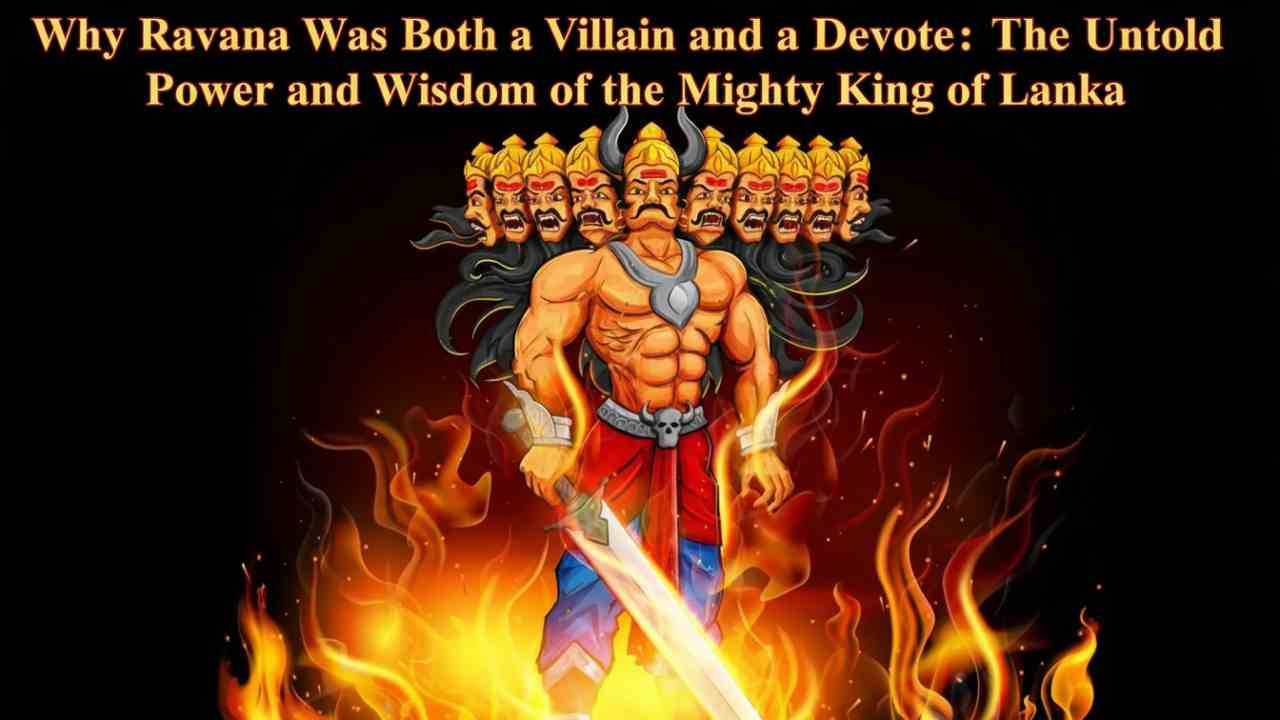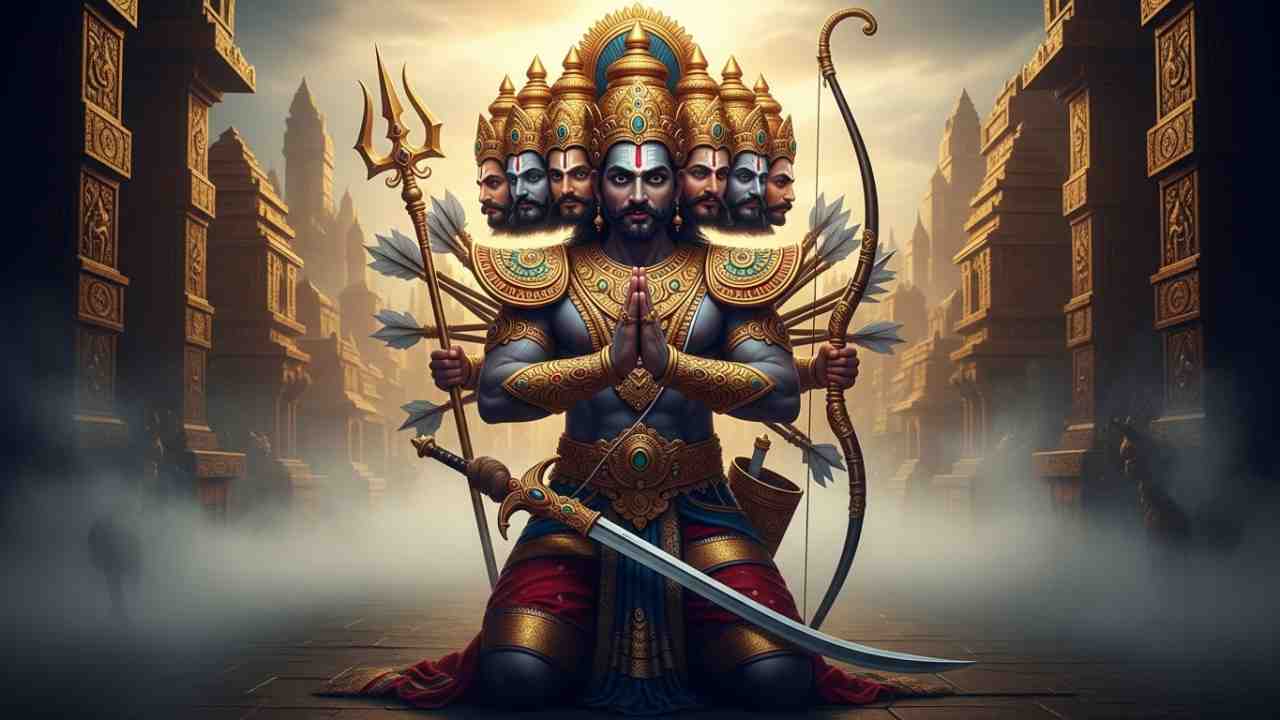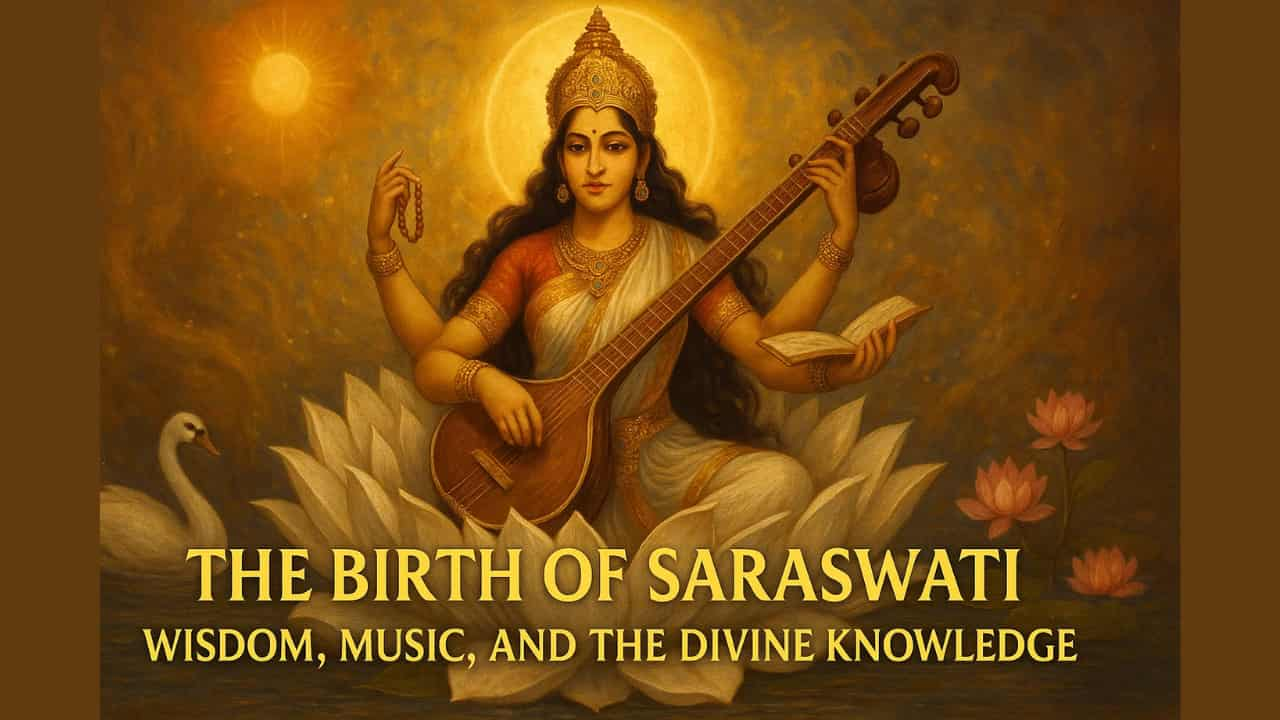
Ravana stands as one of the most complex and fascinating figures in Hindu mythology. He was a man of immense wisdom, unmatched devotion, and unshakable pride. The same hands that played the veena in praise of Lord Shiva also abducted Sita out of arrogance.
This contradiction makes people wonder: Why Ravana was both a villain and a devotee? His story is not just about evil and destruction but also about devotion, knowledge, and divine purpose.
In this article, we will explore the two sides of Ravana, the powerful devotee and the feared villain and the lessons his life teaches.
The Birth and Background of Ravana
Ravana was born to Sage Vishrava, a learned Brahmin, and Kaikesi, a rakshasi princess. This unique parentage gave him both divine intellect and demonic tendencies. From his father, he inherited spiritual knowledge and wisdom. From his mother, he inherited strength, passion, and ambition.
Ravana was not born evil. His journey transformed him into what he became.Understanding why Ravana was both a villain and a devotee requires looking into his origins and spiritual evolution.
As a child, Ravana was highly intelligent and curious about the universe. He mastered scriptures at a young age and was determined to gain power through knowledge and penance. His devotion to Lord Shiva became the central force in his life. But as his powers grew, so did his ego, slowly corrupting his divine potential.
Ravana’s Deep Devotion to Lord Shiva
Ravana’s devotion to Lord Shiva is legendary. He performed intense penance for years to gain the Lord’s blessings. According to ancient texts, he once tried to lift Mount Kailash to prove his strength. Shiva, angered by his arrogance, pressed the mountain down with his toe, trapping Ravana underneath.
Unable to free himself, Ravana realized his folly. He began to sing hymns in praise of Lord Shiva with unmatched devotion and sincerity. These hymns later became known as the Shiva Tandava Stotram, one of the most powerful chants in Hinduism. Pleased with his devotion, Shiva forgave him and blessed him with immense boons, including the divine sword Chandrahas.
This incident beautifully explains why Ravana was both a villain and a devotee.
He was proud and rebellious, yet capable of profound devotion and humility before the divine.
Ravana as a Scholar and a King
Before becoming the feared villain of the Ramayana, Ravana was an exceptional scholar and ruler. He mastered the four Vedas and six Shastras, symbolized by his ten heads, representing vast knowledge and wisdom.
He was also a great musician, known to play the veena with divine grace. His capital, Lanka, was described as the “Golden City,” symbolizing prosperity, culture, and advanced civilization. He was not just a ruler of power but a visionary leader who built temples and promoted art and learning.
People often overlook this side while discussing why Ravana was both a villain and a devotee. He was a king who cared deeply for his people and brought prosperity to his kingdom. Yet, beneath his brilliance, his ego quietly brewed the seeds of his downfall.
The Turning Point: The Rise of Arrogance and Desire
Power often breeds pride, and in Ravana’s case, it turned divine devotion into arrogance. Despite being blessed by Lord Shiva, Ravana’s desire for supremacy became uncontrollable. He began to see himself as invincible, even challenging celestial beings and gods. His lust, anger, and ego overshadowed his wisdom and devotion. He forgot that true devotion to God must come with humility and surrender.
His act of abducting Sita marked the beginning of his moral downfall. He could have chosen peace and righteousness, but his ego blinded him. Even his wife Mandodari and brother Vibhishana advised him to return Sita to Lord Rama.
He ignored them, believing no one could defeat him. This pride shows the destructive side of his personality and answers part of why Ravana was both a villain and a devotee.
Ravana’s Relationship with Rama: The Divine Plan
The Ramayana teaches that everything that happens has a divine reason. Ravana’s confrontation with Lord Rama was not merely a battle between good and evil. It was also the fulfillment of divine destiny.
Ravana, though a demon king, was chosen by destiny to play a vital role in restoring dharma. Lord Vishnu incarnated as Rama to destroy Ravana’s arrogance and free the world from his tyranny. Thus, Ravana’s death was not just punishment but liberation from his karmic burden.
Interestingly, Ravana himself knew that his end would come at the hands of Lord Vishnu. He accepted it as part of the divine cycle. This awareness and acceptance further deepen the understanding of why Ravana was both a villain and a devotee. Even in his last moments, he displayed wisdom and acceptance of divine will.
The Villainous Traits: Ravana’s Flaws and Downfall
Despite his great virtues, Ravana’s flaws overshadowed his strengths. His primary weakness was his uncontrollable ego and lust. He was cursed by many due to his immoral acts, including his assault on celestial women. When he kidnapped Sita, it was not an act of love but one of revenge and arrogance. His lustful nature had already led to curses that limited his powers, yet he failed to learn.
Ravana’s arrogance also led to his disregard for dharma. He disrespected sages, gods, and even his own family when they advised him otherwise.
Vibhishana’s exile is proof of Ravana’s stubborn pride. He refused to listen, blinded by his illusion of invincibility.
In the end, his arrogance led to his destruction, proving that knowledge without humility is dangerous. This inner conflict is the essence of why Ravana was both a villain and a devotee.
Ravana’s Wisdom and His Last Moments

Even in defeat, Ravana’s brilliance and wisdom shone brightly. When Ravana lay dying on the battlefield, Lord Rama asked his brother Lakshmana to learn from him. Rama said that despite being his enemy, Ravana was a great scholar and strategist. Lakshmana stood near Ravana’s head to ask questions, but Ravana did not respond.
Rama then advised him to stand near Ravana’s feet, as humility earns wisdom. When Lakshmana did so, Ravana opened his eyes and shared valuable lessons. He spoke about politics, governance, and life’s priorities. He warned against delaying good deeds and acting impulsively in anger.
These final teachings portray Ravana not as an evil monster but as a fallen genius.They remind us once more why Ravana was both a villain and a devotee, he is a man of immense knowledge destroyed by his own pride.
Ravana’s Devotion Beyond Life
Ravana’s devotion did not end with his death. He is still remembered in many parts of India and Sri Lanka as a great devotee of Lord Shiva. In some traditions, especially in South India and Sri Lanka, he is worshipped as a protector deity.
Temples dedicated to Ravana exist, and his hymns to Lord Shiva continue to be recited by devotees. This cultural duality keeps alive the question of why Ravana was both a villain and a devotee even today.
Symbolism of Ravana’s Ten Heads
Ravana’s devotion did not end with his death. He is still remembered in many parts of India and Sri Lanka as a great devotee of Lord Shiva. In some traditions, especially in South India and Sri Lanka, he is worshipped as a protector deity.
Temples dedicated to Ravana exist, and his hymns to Lord Shiva continue to be recited by devotees. This cultural duality keeps alive the question of why Ravana was both a villain and a devotee even today.
Philosophical Interpretation: The Inner Ravana in Us
The story of Ravana is not merely about an ancient king but also about the human condition. Every individual carries a “Ravana” within the part that seeks power, control, and recognition.At the same time, we also have the potential for devotion, knowledge, and surrender.
Ravana’s story symbolizes this eternal inner battle.It reminds us that spirituality without humility becomes pride, and knowledge without compassion becomes destruction. Understanding why Ravana was both a villain and a devotee helps us reflect on our own inner conflicts.
Lessons from Ravana’s Life
- Devotion must come with humility. Ravana’s devotion was real, but his arrogance tainted it.
- Knowledge is powerful but dangerous when misused. Ravana mastered scriptures yet ignored dharma.
- Control over desire leads to peace. His lust led to his curse and eventual downfall.
- Ego destroys even the greatest. Ravana’s downfall began the moment he thought himself equal to God.
- Wisdom can exist even in imperfection. Despite his flaws, his intellect remained extraordinary.
Each of these points explains why Ravana was both a villain and a devotee, making him one of mythology’s most layered characters.
Ravana in Different Cultures
In some cultures, Ravana is not seen purely as a villain. In parts of Sri Lanka and South India, he is revered for his intellect and devotion. He is considered a great scholar and a ruler who brought prosperity to his people.
His image differs from the northern interpretation where he is seen mainly as the embodiment of evil. This cultural diversity shows the depth of his character and explains why Ravana was both a villain and a devotee.
Some tribal communities in India even worship Ravana during Dussehra instead of burning his effigy. They view him as a misunderstood hero who defied the gods for the sake of his people.
The Timeless Relevance of Ravana’s Story
Ravana’s story continues to inspire thinkers, artists, and spiritual seekers. He represents the conflict between knowledge and morality, between power and humility. In today’s world, his story serves as a reminder that success without ethics leads to self-destruction.
He also teaches that devotion must not be used as a means for personal gain. Instead, it should be an act of surrender and gratitude to the divine. This timeless message defines why Ravana was both a villain and a devotee, making his story forever relevant.
So, Ravana’s life is a powerful paradox of light and darkness, wisdom and arrogance, devotion and destruction. He was a man who touched both the heights of spiritual glory and the depths of moral decay.
His story is not one of pure evil but of imbalance of a warning that pride can destroy even the most gifted soul. Through his life, we understand that devotion without humility and knowledge without virtue are both dangerous. That is ultimately why Ravana was both a villain and a devotee.
He remains one of mythology’s most thought-provoking figures. A king whose brilliance and downfall together form a timeless lesson about the nature of power, devotion, and human weakness.

